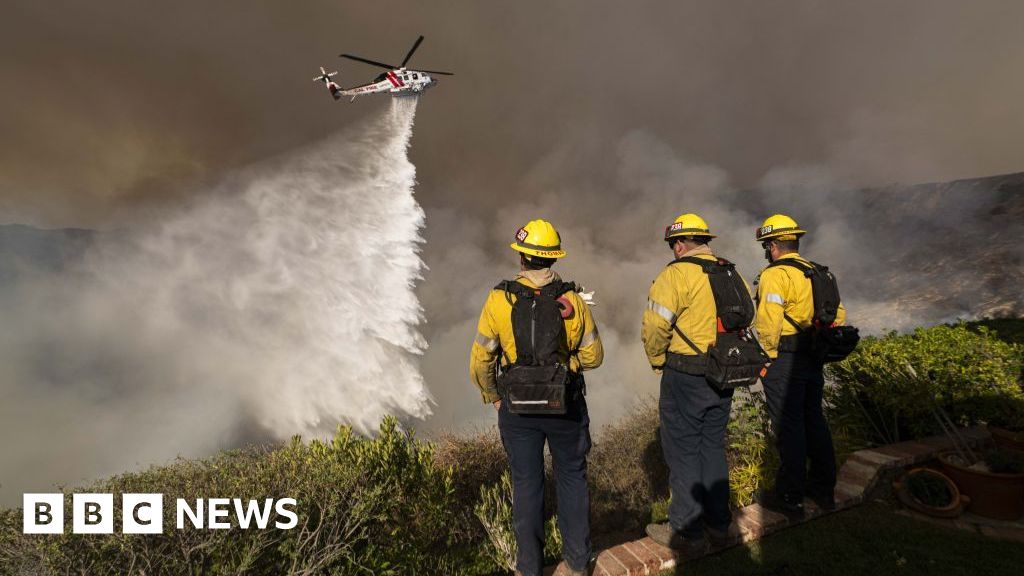This article is part of The D.C. Brief, TIME’s politics newsletter. Sign up here to get stories like this sent to your inbox.
If the Upper Midwest is the fail-safe for Democrats’ Blue Wall, then Minnesota Gov. Tim Walz is its new break-in-case-of-emergency tool.
Democratic presidential nominee Kamala Harris selected Walz, a popular former congressman and ex-high school civics teacher, as her running mate and will introduce him to the nation at a rally Tuesday evening in Philadelphia. In picking Walz, Harris follows the tried-and-true winning rules of picking a running mate: first do no harm, and, second, never make voters wish the names were reversed. They are set to cover the map of up-for-grabs states in coming days: Pennsylvania, Wisconsin, Michigan, North Carolina, Georgia, Arizona, and Nevada.
Walz, 60, emerged as a late-rising contender for the gig in a field full of higher-wattage contenders like Pennsylvania Gov. Josh Shapiro, Arizona Sen. Mark Kelly, and Kentucky Gov. Andy Beshear. But Walz’s plain-spoken demeanor, his five terms in the U.S. House, and two successful runs for Governor helped Harris to cast him in the role she currently fills as the understudy for the presidency. Advisers say his chemistry with Harris helped to cement the decision over the weekend and outside allies—even those who previously harbored doubts about his one-time support from the NRA and his moderate tendencies—were expected to quickly fall in line, part of a Democratic retrofitting that followed President Joe Biden’s surprise decision to forego re-nomination himself.
To be sure, Walz is hardly a dynamo who will guarantee Democrats’ fortunes. He may take Minnesota off Republicans’ dream map—no Republican has won the state’s electoral votes since 1972—but he doesn’t fix Democrats’ weaknesses in other parts of his region, let alone necessarily boost their ambitions for Pennsylvania, Georgia, or North Carolina. He doesn’t hurt anywhere but he certainly doesn’t heal anywhere, either.
While Harris’ polling has markedly improved upon Biden’s—especially with younger voters, women, and communities of color—she is far from a sure-fire win in the contest against former President Donald Trump. Harris and Trump are still within a sneeze of each other in battleground states, and Trump has a slight and persistent advantage in them.
For his part, Walz has already proven himself a capable wingman. Armchair pundits credited Walz’s rise to his use of the jab “weird” to describe Republican positions and general vibe these days, a ding that clicked throughout a party struggling to find a concise description of Trumpism and MAGA ideology. Others may now be using the same playbook, but it was Walz’s delivery—fairly or not—that resonated with a level of authenticity that’s unmatched when others lean on a similar corny script.
While Walz’s Midwestern knack distilled a message for his party, that ultimately mattered less than this one truth that Harris knows all too well: the person in the Oval Office and the person in the room down the hall and to the right need to be able to be in sync. A bad blend can result in the misfortune that was Harris’ first stretch in the West Wing as an often isolated member of Biden’s outer orbit. Late to rise into her own lane, Harris nonetheless has perhaps learned the most important lesson available to any Vice President: the role can be a lonely one if defined solely by its relationship to the one gig that outranks it.
Harris’ decision faced intense lobbying unlike any seen in recent years. Shapiro could have made history as the first successful Jewish person to win the vice presidency, but faced not-at-all-subtle criticism for his steady support for Israel—although his criticism of Hamas and those who fail to condemn its terrorist attacks is not far from Walz’s own stance, which stems from his visits to the region and with Jewish groups at home. Shapiro also drew harsh scrutiny for his time on Pennsylvania’s parole board and his support for school vouchers, which put him on the wrong side of the state’s powerful teacher unions. His criticism of Hamas in particular seemed disqualifying for many younger voters, especially in Muslim and Arab communities.
At the same time, Harris was cautioned against Kelly over his support for efforts to curb some gun availability. Kelly, a retired Navy pilot and astronaut, partnered with his wife, former Rep. Gabby Giffords, to reset gun rights in this country after she was the target of an assassination attempt during a supermarket visit. Unions also told Harris they were dubious about his allyship for their agenda.
And with Beshear, they had a red-state Governor who nevertheless would do nothing to move Kentucky from the crimson column. A natural political talent and infinitely likable, Harris’ orbit thought it best to keep him in reserve for now.
Others, like Transportation Secretary Pete Buttigieg and Illinois Gov. J.B. Pritzker, will have to wait at least four more years before chasing their own national ambitions. And yet others like North Carolina Gov. Rory Cooper and Michigan Gov. Gretchen Whitmer took themselves out of the running and didn’t file their vetting paperwork with former Attorney General Eric Holder, who ran the process the way he did for then-Sen. Barack Obama.
In Walz, Harris found a reliable avatar who placated most of the Democratic Party’s blocs. While he often disagreed with progressives in his state, he also leaned into their instincts once he found himself governor with Democrats in charge of the state House and Senate. For instance, he not only signed into law a measure to protect abortion rights and provide free school meals for students, he also made legal recreational marijuana a reality. While he was an A-rated member of the House from the NRA, that quickly became a failing grade as Governor as he off-loaded the gun lobbyists’ donations after the 2017 mass shooting in Las Vegas and backed a 2018 ban on assault weapons after the school shooting in Parkland, Fla. When given a free hand, he revealed himself as an ally liberals could find reliable. Even so, his handling of the protests after George Floyd’s death by dispatching the National Guard will now earn closer scrutiny and perhaps betray his new reputation as a pal to the post-2020 Democratic identity.
Still, Walz is far from the salve Democrats need. While Biden’s exit is expected to calm jitters about Minnesota’s tilt to Republican control and Walz can shore-up support in his backyard, fellow Blue Wall bricks like Wisconsin and Michigan in his region remain iffy. Pennsylvania, too, is a jump ball, which is why Harris and Walz are expected to debut as the ticket there on Tuesday before jetting off to other battlegrounds to start the march toward the convention in Chicago in less than two weeks and Election Day in fewer than 100 days.
In Walz, Harris signaled with her first major act of potential governing how she would approach a White House under her management. It was a responsible choice at first glance, and one that matched her own experiences four years ago when Biden elevated her out of the Senate: help the top of the ticket, never overshine the boss, and do a steady best not to alienate any of the must-have constituencies in the Democratic Party. As a bonus: the presidential nominee might even like the potential replacement.
Make sense of what matters in Washington. Sign up for the D.C. Brief newsletter.




















Discussion about this post